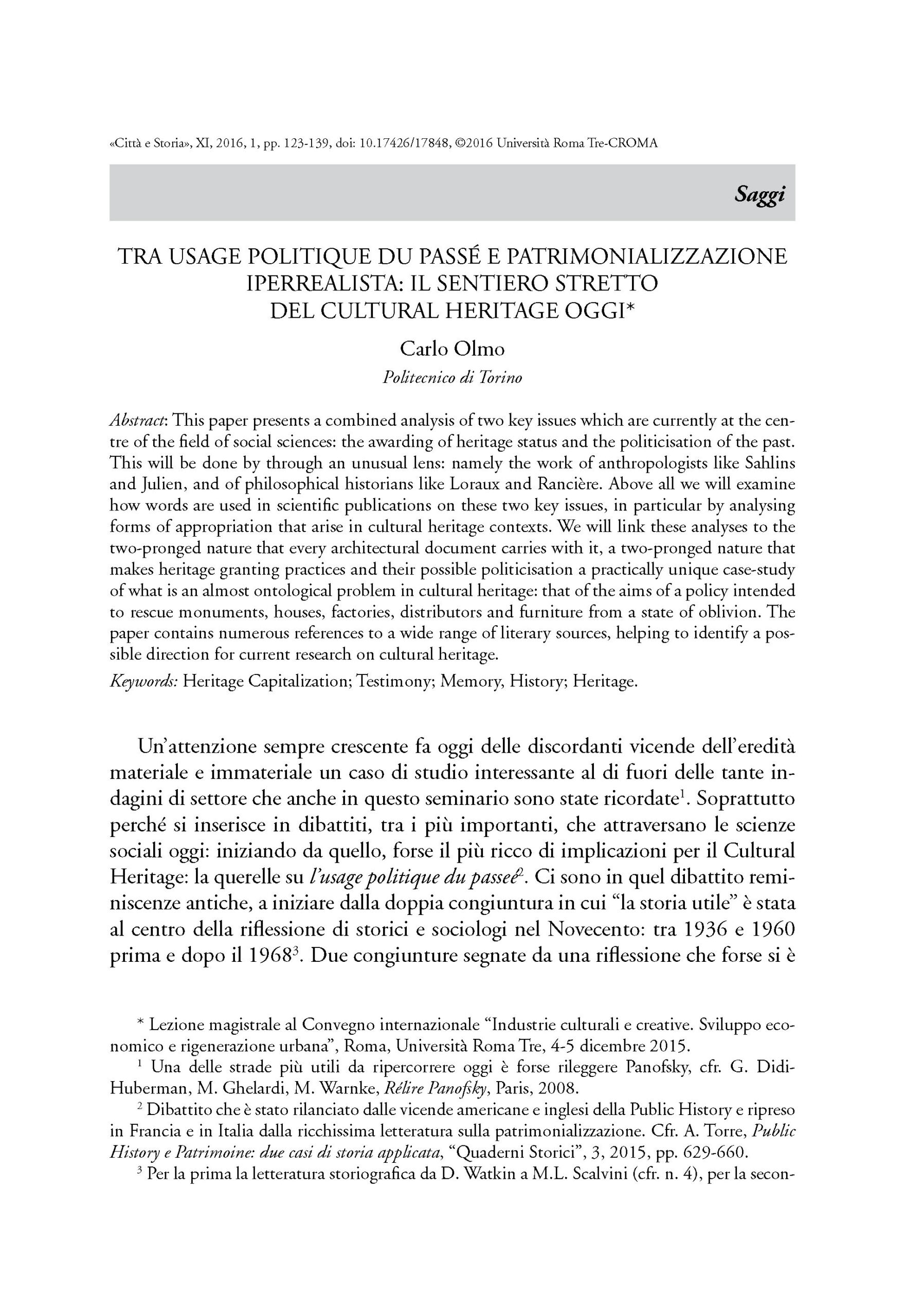Tra usage politique du passé e patrimonializzazione iperrealista: il sentiero stretto del Cultural Heritage oggi
6,00 €
This paper presents a combined analysis of two key issues which are currently at the centre
of the field of social sciences: the awarding of heritage status and the politicisation of the past.
This will be done by through an unusual lens: namely the work of anthropologists like Sahlins
and Julien, and of philosophical historians like Loraux and Rancière. Above all we will examine
how words are used in scientific publications on these two key issues, in particular by analysing
forms of appropriation that arise in cultural heritage contexts. We will link these analyses to the
two-pronged nature that every architectural document carries with it, a two-pronged nature that
makes heritage granting practices and their possible politicisation a practically unique case-study
of what is an almost ontological problem in cultural heritage: that of the aims of a policy intended
to rescue monuments, houses, factories, distributors and furniture from a state of oblivion. The
paper contains numerous references to a wide range of literary sources, helping to identify a possible
direction for current research on cultural heritage.
This paper presents a combined analysis of two key issues which are currently at the centre
of the field of social sciences: the awarding of heritage status and the politicisation of the past.
This will be done by through an unusual lens: namely the work of anthropologists like Sahlins
and Julien, and of philosophical historians like Loraux and Rancière. Above all we will examine
how words are used in scientific publications on these two key issues, in particular by analysing
forms of appropriation that arise in cultural heritage contexts. We will link these analyses to the
two-pronged nature that every architectural document carries with it, a two-pronged nature that
makes heritage granting practices and their possible politicisation a practically unique case-study
of what is an almost ontological problem in cultural heritage: that of the aims of a policy intended
to rescue monuments, houses, factories, distributors and furniture from a state of oblivion. The
paper contains numerous references to a wide range of literary sources, helping to identify a possible
direction for current research on cultural heritage.

